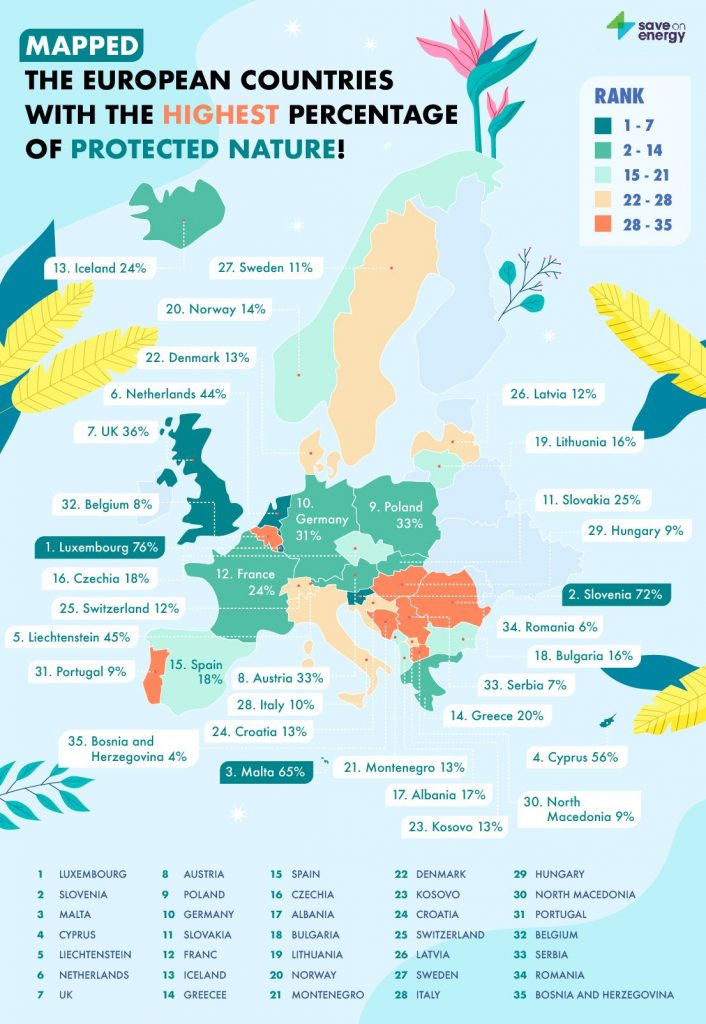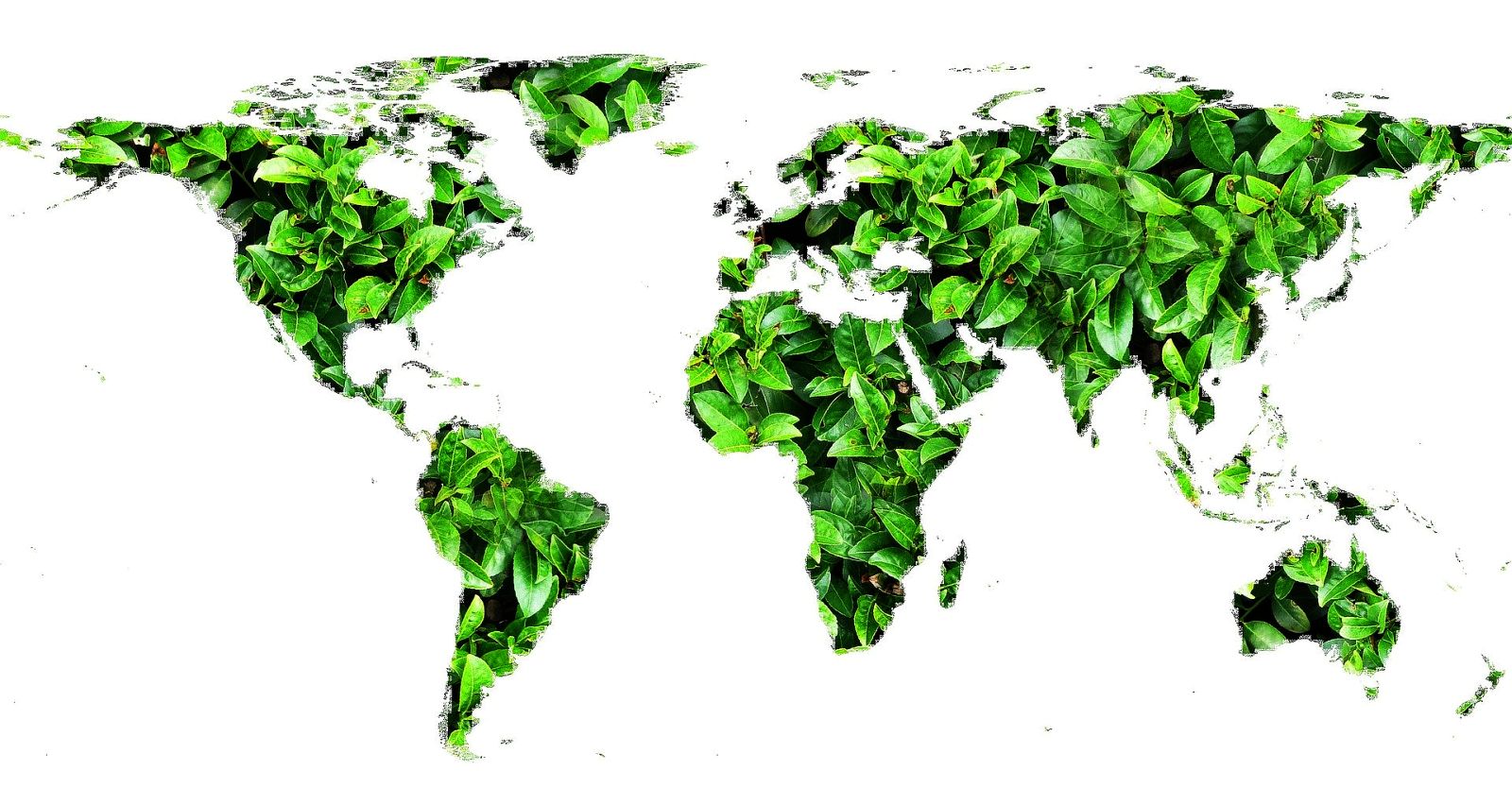2020 was the year of staycations and learning to love the nature that’s around you – The New York Times recently reported a surge of European nature lovers visiting protected areas for the first time. But which country does the best job at protecting their natural sites?
SaveOnEnergy.com/uk analysed almost 80,000 nationally protected terrestrial areas in Europe, calculating the percentage of protected space per country, to discover who makes the biggest attempt to preserve their natural terrene.
Results
Which country has the highest percentage of protected terrestrial areas?
Thanks to protected sites such as Geopark Mëllerdall and Naturpark Our, SaveOnEnergy.com/uk can reveal that Luxembourg is the European country with the highest percentage of protected land (76%). Luxembourg is one of the smallest countries in Europe (2,586 km2) and is home to just 134 designated areas, but with these areas covering 1,963 km 2 they take first place.

In second place is Slovenia, with 72% of their country’s nature being protected, the country has a whopping 1,891 designated areas.
Malta has the third-highest percentage of protected terrestrial land in Europe! Covering 65% of their land, there are 250 sites for locals to enjoy such as Għar Dalam cave, Maqluba and Mdina.
Cyprus (57 designated areas) and Liechtenstein (44 designated areas) place fourth and fifth, as 56% and 45% of their country’s land is protected by legislation.
Top complete the top 10 countries with the highest percentage of protected terrestrial land:
6. Netherlands: 44%
7. United Kingdom: 36%
8. Austria: 33%
9. Poland: 33%
10. Germany: 31%
Which country has the lowest percentage of protected terrestrial areas?
At just 4%, SaveOnEnergy found that Bosnia and Herzegovina is the country with the smallest percentage of protected nature in Europe. Although there are 40 designated sites, they only cover 1,922 km2 of the country’s 192,232 km2 land.
Protecting just 6% of their terrestrial land, Romania places second to last. Despite having many designated areas, such as Dealul Zackel and Cindrel, they aren’t widely spread across the country.
Completing the bottom five are Serbia, Belgium and Portugal, with just 7%, 8% and 9% of their land protected respectively.
Which country has the largest number of protected terrestrial areas?
Germany is home to the most designated terrestrial land! With a whopping 17,654 areas, they top the ranks.
Sweden places in second as 15,254 areas have been protected by legislation in the country.
Following in third, fourth and fifth position are Switzerland with 10,423, the United Kingdom with 9,032 and France with 3,812.
On the other end, SaveOnEnergy.com/uk found that Bosnia and Herzegovina is the country with the smallest number of protected sites – 40. They are followed by Liechtenstein (44), Montenegro (54) and Cyprus (57).
Please see the full blog post for more information: https://www.saveonenergy.com/uk/protected-land-in-european-countries/
Methodology & Notes:
- SaveOnEnergy.com/uk analysed the European Environment Agency’s list of nationally designated areas to discover the total number of designated and respective protected areas in each European country, as of 2020.
- They then found the total area of each country to calculate the percentage of protected space per country.
- SaveOnEnergy only considered the protected terrestrial areas of each country for this research – ‘marine’, ‘marine and terrestrial’ and ‘heritage’ sites were not included. The sites that spill over into other countries were also removed.
A ‘nationally designated protected area’ is an area protected by national legislation.
Terrestrial protected areas are totally or partially protected areas that are designated by national authorities as scientific reserves with limited public access, national parks, natural monuments, nature reserves or wildlife sanctuaries, protected landscapes, and areas managed mainly for sustainable use.
Estonia, Finland, Ireland and Turkey were removed from the data as EEA does not have permission to distribute some or all sites by the countries.
Source: https://www.saveonenergy.com/uk/protected-land-in-european-countries/







